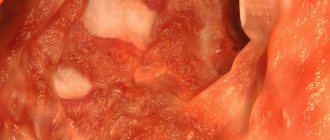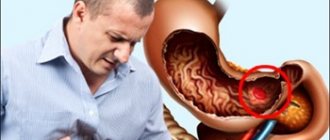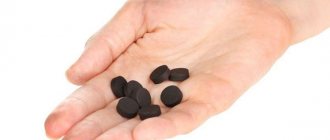Detailed description of the study
Shigellosis, or dysentery, is an acute intestinal infection, which is accompanied by intoxication of the body and damage to the gastrointestinal tract, mainly the distal parts of the large intestine. The causative agent of the disease is bacteria of the genus Shigella. Based on their properties, they are divided into 4 groups (Flexner/S. flexneri, Bodie/S. boydii, Dysentery/S. dysenteriae, Sonne/S. sonnei), each of which has several types.
The source of infection is humans. The mechanism of transmission of the pathogen is fecal-oral. Bacteria enter the body with contaminated food or water in the stomach, and then enter the small and large intestines, where they penetrate cells, release a toxin and cause inflammation, including the formation of ulcers on the mucous membrane. The toxin acts on nerve endings, causing spasms and pain, as well as on blood vessels, leading to circulatory disorders. The toxin has not only a local effect, but also a general one - a person develops intoxication.
The incubation period is 2-3 days. The disease begins with increased body temperature, weakness, lethargy, nausea, and pain in the lower abdomen. The stool becomes frequent, liquid, mixed with blood. Then the person feels sharp, nagging pain in the lower abdomen and rectal area, a urge to have a bowel movement with a slight discharge in the form of mucus and/or blood, and sometimes a complete absence of discharge (the so-called false urge to defecate, tenesmus). A gastroenteric variant is also distinguished, which is characterized by more significant damage to the upper gastrointestinal tract, accompanied by profuse vomiting and frequent bowel movements in the absence of severe damage to the colon.
Dysentery can become chronic (more than three months). It can be continuous when symptoms progress with deep damage to the gastrointestinal tract. In this case, no significant intoxication is observed, but the person suffers from constant abdominal pain and diarrhea. With a recurrent course of the disease, periods of exacerbation alternate with phases of remission. The chronic course of shigellosis is more typical for people with reduced immunity.
Also one of the forms of the disease is bacterial carriage. It is characterized by the absence of clinical signs during and three months before the examination, while Shigella is detected in the stool.
Shigellosis can have adverse effects, especially in children. After infection with Shigella Flexner, in 2-4% of cases, reactive inflammation of the joints (arthritis), eye damage (conjunctivitis) and inflammation of the urethra (urethritis) are possible. Timely detection and treatment of shigellosis helps to avoid its complications.
To diagnose dysentery, bacteriological methods (isolation of the pathogen), PCR (DNA determination) and serological (determination of antibodies in the blood) are used.
When bacteria enter the body, protective antibodies are formed against them - immunoglobulins. IgM is produced at the onset of the disease, and IgG - at later stages. Determination of antibodies in the blood to Shigella (serology) is an auxiliary diagnostic method, especially indicated in the case of a negative bacteriological test result, if shigellosis remains suspected. The analysis allows us to detect total antibodies of both classes to Shigella Flexnera serotypes 1-5. This study must be carried out dynamically, with the first analysis carried out, for example, upon admission to the hospital (best from the 5th day of the disease), and then 7–10 days after the first study. The diagnosis is confirmed by an increase in the titer (level) of antibodies by at least 4 times.
Shigella flexneri (Flexner's Shigella)
Shigella Flexnera
(lat.
Shigella flexneri
, common abbreviation
Sh. flexneri
) is a type of bacteria that causes dysentery.
Shigella classification
Flexner's Shigella is one of four species of the genus Shigella ( Shigella
), which is part of the family Enterobacteriaceae
,
order Enterobacteriales
, class gamma-proteobacteria (Latin
γ proteobacteria
) , phylum Proteobacteria (Latin
Proteobacteria
) , kingdom of bacteria. Shigella species are considered to coincide with their respective serogroups. Six serotypes have been identified as Shigella Flexner. All types of Shigella (and this, in addition to Flexner's Shigella, also Boyd's Shigella, Shigella dysentery and Sonne's Shigella) are causative agents of dysentery.
Shigella Flexnera. general information
Shigella Flexner's bacteria are gram-negative, facultative anaerobes.
Just like other Shigella, they are immobile and have a size of 2-3 by 0.5-0.7 microns and form spores and capsules. Shigella Flexnera is an average type of Shigella in terms of resistance to external factors. They die instantly when boiled; when heated to 60 °C, they die in 10-20 minutes. They can survive for a long time in milk and dairy products, fruits and vegetables, and survive for some time in the soil, in cesspools and polluted open water bodies.
Shigella Flexnera - the causative agent of dysentery
Shigella Flexner's is the most frequently detected causative agent of bacillary dysentery in developing countries (up to 60% of cases among all shigellosis). Dysenteries caused by Shigella Flexnera are usually treatable with antibiotics, although some strains of Sh.
flexneri have become resistant to many modern antibiotics.
Antibiotics active against Shigella Flexner
Antibacterial agents (those described in this reference book) active against Shigella Flexner: furazolidone, nifuroxazide, nifuratel, ciprofloxacin, doxycycline (not for all strains).
Shigella flexneri in ICD-10
Shigella flexneri
is mentioned in the International Classification of Diseases ICD-10 in “Class I. Some infectious and parasitic diseases”, in which in the block “A00-A09 Intestinal infections” there is a heading “A03.1 Shigellosis caused by
Shigella flexneri
" with the decoding that it is " Shigellosis group B."
On the website GastroScan.ru in the “Literature” section there is a subsection “Constipation and Diarrhea”, containing professional medical articles, including those related to bacterial diarrhea and their treatment.
Back to section
What else is prescribed with this study?
Clinical blood test with leukocyte count and ESR (with microscopy of a blood smear to detect pathological changes) (venous blood)
3.9.1. Ven. blood 1 day
430 ₽ Add to cart
Coprogram
21.2. Feces 1 day
370 ₽ Add to cart
Culture for intestinal pathogens (Shigella spp., Salmonella spp.)
123.0. Feces, smear 4 days
690 ₽ Add to cart
Culture for yersinia (Yersinia spp.)
132.0. Feces 12 days
690 ₽ Add to cart
Shigella, Escherichia, Salmonella, Campylobacter, DNA (Shigella spp., E. coli (EIEC), Salmonella spp., Campylobacter spp., PCR) feces, quality.
19.53. Feces 2 days
860 ₽ Add to cart
Dysentery - symptoms and treatment
Shigellosis, or dysentery , is a group of acute/chronic diseases caused by bacteria of the genus Shigella that affect the gastrointestinal tract (mainly the distal colon). Manifest forms (clinical picture) of dysentery: syndrome of general infectious intoxication, syndrome of gastrointestinal tract damage (distal colitis), dehydration syndrome. In the absence of adequate treatment, it leads to serious complications and chronicity.
The causative agent of dysentery
Kingdom - bacteria
family - intestinal bacteria (Enterobacteriaceae)
genus - Shigella
types - 4 main:
- Dysenteriae (serovars - Shigella Grigoriev-Schig, Stutzer-Schmitz, Large-Sachs);
- Flexneri (Flexner);
- Boydii (Boudii);
- Sonnei (Sonne).
They are facultative anaerobic (able to exist both in the presence and absence of oxygen), gram-negative, immobile rods. They grow well on regular nutrient media.
They have an O-antigen (serological specificity) and a K-antigen (shell structure). The cell wall consists partly of endotoxin (lipopolysaccharide), which is released when the microorganism dies. Bacteria of the species Shigella Dysenteriae serovar Grigoriev-Shiga produce a highly active cytotoxin that disrupts protein synthesis by ribosomes of intestinal epithelial cells. Cytotoxin, together with enterotoxin (which enhances the secretion of fluid and salts into the intestinal lumen) and neurotoxin (which has a neurotoxic effect on the Auerbach plexuses), forms exotoxin - a toxin released during the life of Shigella (Cytotoxin + enterotoxin + neurotoxin = exotoxin). Also, this group of microorganisms releases hemolysins - substances that destroy the endothelium of capillaries and cause ischemia in the intestinal tissues).
Pathogenicity factors of Shigella (mechanism of bacterial adaptation):
- adhesion (attachment to the intestinal mucosa);
- invasion (penetration into the epithelial cells of the mucous membrane of the large intestine);
- toxin formation;
- intracellular reproduction.
Tinctorial properties (features of microorganisms when stained): quickly change sensitivity to antibacterial drugs. Characterized by high survival in the external environment (in water, soil and food at room temperature they remain for up to 14 days, in sewage for up to 30 days, under favorable conditions they can be viable for up to 4 months). Capable of reproduction in food products. When exposed to UV rays (ultraviolet irradiation) they die in 10 minutes, in 1% phenol - in 30 minutes, when boiled - instantly .
An interesting feature: the higher the enzymatic activity of the dysentery pathogen, the lower the virulence (the minimum dose of the pathogen that can infect a person) and vice versa.[3][6]
Epidemiology
Anthroponosis (widespread).
The source of infection is a person (patient, carrier and persons with a subclinical form of the disease).
The minimum infectious dose for the Grigoriev-Shiga bacterium is 10 microbial bodies in 1 gram of substance, for Flexner - 102 bacteria, for Sonne - from 107.
For a long time, cases of infection caused by Shigella Flexnera 2a prevailed in the Russian Federation, but currently, due to the widespread development of tourism, there is no long-term predominance of any form.
The transmission mechanism is fecal-oral (food, water, contact and household), of which mainly:
- Grigorieva-Shiga (contact and household path);
- Sonne (with milk and dairy products);
- Flexner (waterway);
- Dysentery (food route).
Food and water workers pose the greatest danger. Patients are contagious from the onset of the disease (end of the incubation period) until three weeks of illness.
Immunity is short-lived and monospecific (produced only to one serotype that caused the disease).[1][4][5]
Treatment
The main principle is the earliest possible start of therapeutic measures.
Treatment of dysentery in children is carried out in the infectious diseases department. Adults with mild forms of the disease can be treated at home, while adults with severe and moderate forms of dysentery are treated in a hospital. What therapeutic measures do doctors use against dysentery?
Medical nutrition
Diet therapy plays an important role. In the acute stage of the inflammatory process, a therapeutic diet low in carbohydrates and fats is prescribed. Patients take food 5-6 times a day in small portions. Foods that cause bloating are not recommended.
Products recommended by nutritionists:
- pureed vegetable soups;
- wheat crackers;
- fish soups;
- omelet, soft-boiled eggs;
- white bread crackers;
- boiled lean meat or fish;
- porridge with water (oatmeal, rice).
Foods that doctors advise to exclude from the diet:
- fatty meats and rich broths;
- flour products;
- fresh bread;
- salted fish;
- sausage;
- pearl barley and millet porridge;
- pasta;
- beans, peas;
- jam, compotes;
- fresh vegetables and fruits;
- milk;
- coffee.
Drug therapy
The main drugs against dysentery are antibiotics. In some cases, a polyvalent bacteriophage is also prescribed. The duration of the course of antibiotics is up to 7 days.
To remove bacterial toxins from the body, patients are prescribed Enterosgel sorbent.
Taking antidiarrheal medications is contraindicated for the patient! These medications slow down the removal of the pathogen from the intestines.
After a course of antibiotic therapy, intestinal dysbiosis is treated and the normal bacterial picture of the intestine is restored. If necessary, vitamins, antihistamines and immunostimulants are prescribed. If food digestion is impaired, digestive enzymes are prescribed.
Comprehensive treatment of dysentery in children includes:
- combating dehydration - drinking plenty of fluids, saline solutions;
- bed rest;
- fight against intoxication (Enterosgel);
- therapeutic diet;
- antibacterial therapy;
- enzymes;
- To reduce intestinal discomfort, Enterosgel is recommended;
- prebiotics and probiotics to restore intestinal microflora.
Children in the recovery stage are prescribed vitamins, decoctions of medicinal herbs, medications that increase the body's defenses, and spa treatment.
Preventive actions
Infection can be prevented by observing basic hygiene. Prevention of dysentery includes:
- washing hands before eating;
- proper storage and adherence to cooking technology;
- mandatory boiling of milk and water before consumption;
- isolation of a patient with dysentery, thorough disinfection of his linen and utensils;
- preventive examination of catering workers to exclude bacteria carriage;
- isolation of sick children, ban on visiting kindergartens and schools until complete recovery and negative stool culture results.
Dysentery
The incubation period of acute dysentery can last from one day to a week, most often it is 2-3 days. The colitic variant of dysentery usually begins acutely, the body temperature rises to febrile levels, and symptoms of intoxication appear. Appetite is noticeably reduced and may be completely absent. Nausea and vomiting are sometimes observed. Patients complain of intense cutting pain in the abdomen, initially diffuse, later concentrating in the right iliac region and lower abdomen. The pain is accompanied by frequent (up to 10 times a day) diarrhea, stool quickly loses its fecal consistency, becomes scanty, and contains pathological impurities - blood, mucus, and sometimes pus (“rectal spit”). The urge to defecate is excruciatingly painful (tenesmus), sometimes false. The total number of daily bowel movements is usually not large.
On examination, the tongue is dry, coated, tachycardia, and sometimes arterial hypotension. Acute clinical symptoms usually begin to subside and finally fade away by the end of the first week, the beginning of the second, but ulcerative defects of the mucous membrane usually heal completely within a month. The severity of the colitis variant is determined by the intensity of intoxication and pain syndrome and the duration of the acute period. In severe cases, there are disturbances of consciousness caused by severe intoxication, the frequency of stools (like “rectal spitting” or “meat slop”) reaches dozens of times a day, painful abdominal pain, and significant hemodynamic disturbances are noted.
Acute dysentery in the gastroenteric variant is characterized by a short incubation period (6-8 hours) and predominantly enteral symptoms against the background of a general intoxication syndrome: nausea, repeated vomiting. The course resembles that of salmonellosis or toxic infection. The pain in this form of dysentery is localized in the epigastric region and around the navel, has a cramping nature, the stool is loose and profuse, there are no pathological impurities; with intense loss of fluid, dehydration syndrome may occur. The symptoms of the gastroenteric form are violent, but short-lived.
Initially, gastroenterocolitic dysentery also resembles a foodborne toxic infection in its course; subsequently, colitic symptoms begin to appear: mucus and bloody streaks in the stool. The severity of the gastroenterocolitic form is determined by the severity of dehydration.
Dysentery of the erased course today occurs quite often. There is discomfort, moderate pain in the abdomen, mushy stool 1-2 times a day, mostly without impurities, hyperthermia and intoxication are absent (or extremely insignificant). Dysentery lasting more than three months is considered chronic. Currently, cases of chronic dysentery in developed countries are rare. The recurrent variant represents periodic episodes of the clinical picture of acute dysentery, interspersed with periods of remission, when patients feel relatively well.
Continuous chronic dysentery leads to the development of severe digestive disorders and organic changes in the mucous membrane of the intestinal wall. Intoxication symptoms in continuous chronic dysentery are usually absent, there is constant daily diarrhea, stools are mushy and may have a greenish tint. Chronic malabsorption leads to weight loss, hypovitaminosis, and the development of malabsorption syndrome. Convalescent bacterial excretion is usually observed after suffering an acute infection, subclinical - occurs when suffering from dysentery in an erased form.
Atypical manifestations of dysentery
- erased form of the disease - characterized by minor intestinal symptoms and lack of intoxication, so patients rarely seek medical help;
- fulminant form - severe intoxication, acute renal failure;
- gastroenterocolitic form - its manifestation resembles foodborne toxic infection.
Symptoms and treatment depend on the type of pathogen. Shigella Sonne often causes bacterial carriage and the disease caused by this pathogen occurs in the form of a foodborne toxic infection. Shigella Grigorieva-Shiga causes severe dysentery, with severe intoxication and intestinal symptoms, while Flexner's shigellosis is characterized by a milder course of the disease.
Ways of transmission of the disease
The source of intestinal infection is patients with dysentery or bacteria carriers, that is, people who have no manifestations of the disease, but are infectious to others.
The causative agents of this acute intestinal infection enter the body with food, water, through contaminated household items, dishes, toys and unwashed hands.
Infection occurs due to non-compliance with personal hygiene rules - dysentery, typhoid fever, helminthiasis, cholera, salmonellosis and hepatitis A are diseases of “dirty hands”.
You can also become infected with dysentery by swimming in polluted waters.
Quite often the cause of the disease is our carelessness. You finished eating expired yogurt or bought shawarma on the beach - what’s wrong with that? For some it may be nothing, but for others such an experiment with their health may result in treatment.
Dysenteric geography
Bacterial dysentery is more common in European countries, amoebic dysentery - in India and Mexico.
Tourists planning a trip and getting vaccinated against dysentery should not forget about this.
It has been observed that children, adolescents and people with chronic diseases are more susceptible to bacillary dysentery.
Sonne's dysentery is most often caused by dairy products contaminated with bacteria; Flexner's dysentery is transmitted through contaminated water; amoebic dysentery can be “caught” by eating unwashed vegetables, herbs, and contaminated water.
In addition, the causative agent of dysentery is carried by cockroaches and flies.
The disease more often “makes itself known” in the summer-autumn period, since it is at this time that the most favorable conditions are created for the spread of yersiniosis, dysentery and salmonellosis.
Infectious disease doctors warn that the most dangerous dish in the summer is salads dressed with mayonnaise! Almost all foods that have not been heat-treated can pose a health risk - for example, raw eggs, shellfish, sushi, milk, vegetables and herbs.
What diseases should the disease be differentiated from?
Treatment of dysentery in adults begins after other diseases have been excluded: bacterial and viral intestinal infections, amoebiasis, ulcerative colitis, colon cancer.
With amoebic dysentery (amebiasis), the stool looks like “raspberry jelly”, the disease occurs without severe intoxication and significant fever.
With salmonellosis, bowel movements are not accompanied by painful or false urges, and the feces look like swamp mud.
Cholera is accompanied by profuse diarrhea and dehydration, and the stool has the appearance of rice water. Abdominal pain, fever and false urges are not typical.
With typhoid fever, the liver and spleen are enlarged, and there are rashes on the skin.
With nonspecific ulcerative colitis and colon cancer, there are characteristic changes in the mucous membrane of the large intestine. The diagnosis is established after instrumental examination.







